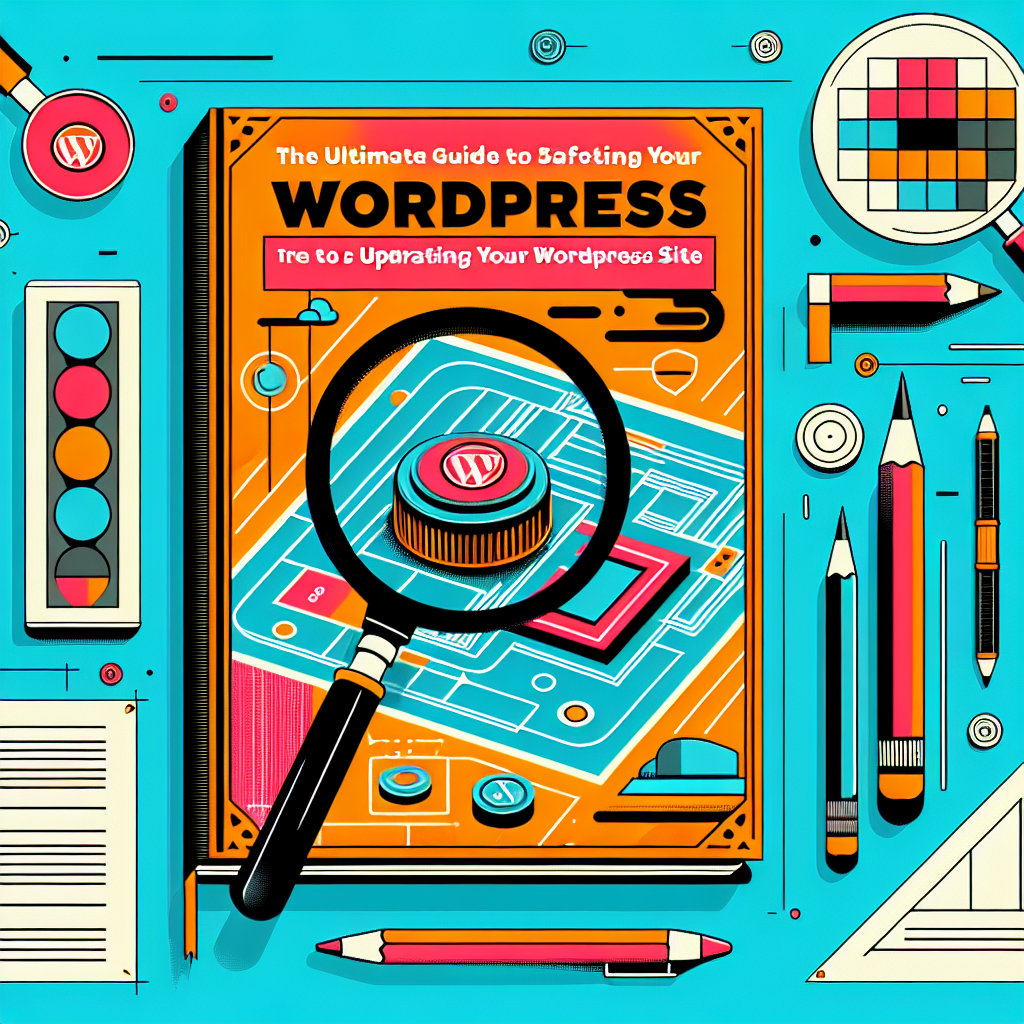Understanding the Importance of Updates
Updating your WordPress site is not merely a recommendation; it’s an essential practice to ensure your website remains secure, functional, and efficient. Each update, whether it’s a WordPress core update, plugin update, or theme update, plays a pivotal role in enhancing your site’s performance and safeguarding it against vulnerabilities.
Security Enhancements
One of the most compelling reasons to keep your site updated is security. WordPress is the world’s most popular content management system, which makes it a prime target for hackers. Regular updates include patches for security vulnerabilities that can be exploited. Ignoring these updates is akin to leaving the front door of your house wide open.
Improved Features and Functionality
Every update often comes with new features or improvements to existing functionalities. By staying current, you can leverage the latest tools to enhance user experience and site performance. This can include better SEO capabilities, faster load times, and improved user interface elements.
Bug Fixes
Updates also resolve bugs that could affect your website’s usability. A bug in a plugin or theme can lead to crashes, broken links, or even data loss. Updating ensures that your site operates smoothly, minimizing downtime and negative impacts on your business.
Preparing for Updates
Before you dive into updating your WordPress site, preparation is key. A well-prepared approach can save you from potential headaches down the line.
1. Backup Your Website
The very first step before any update should always be to create a full backup of your website. This includes your database, plugins, themes, and any custom files. If something goes wrong during the update, you can easily restore your site to its previous state.
- Use Backup Plugins: Consider plugins such as UpdraftPlus, BackupBuddy, or Duplicator for easy backups.
- Manual Backup: If you prefer, you can manually backup your files via FTP and export your database using phpMyAdmin.
2. Check Compatibility
Before updating, it’s crucial to ensure that your themes and plugins are compatible with the new version of WordPress. Developers usually release compatibility updates, but it’s still wise to check.
- Review Change Logs: Always check the change logs of your plugins and themes to identify any potential compatibility issues.
- Staging Environment: If possible, use a staging environment to test updates before applying them to your live site.
3. Update Plugins and Themes First
It’s generally a good practice to update your plugins and themes before updating the WordPress core itself. This allows you to identify and address any issues that might arise from compatibility problems.
Executing the Update
Once you’ve prepared adequately, it’s time to execute the update. Here’s how to do it safely and effectively.
1. Update WordPress Core
To update your WordPress core, navigate to your dashboard and click on “Updates.” Here you will see the option to update your WordPress version. Click “Update Now,” and the system will take care of everything.
2. Update Plugins and Themes
After updating the core, proceed to update your plugins and themes. Again, head to “Updates” in your dashboard and follow the prompts to update each one.
3. Monitor Your Site Post-Update
After performing the updates, spend some time monitoring your site. Check for any broken links, missing images, or features that may not be functioning as expected. It’s vital to ensure everything is running smoothly.
Troubleshooting Common Update Issues
Even with the best preparation, you may encounter issues during or after an update. Here are some common problems and how to address them:
1. Site Crashes or Errors
If your site crashes post-update, the first step is to restore it from the backup you created. Once restored, you can troubleshoot the issue by disabling plugins one by one to identify the culprit.
2. Conflict with Plugins or Themes
Sometimes, an update may cause conflicts between plugins or themes. If you notice functionality issues, try deactivating and reactivating plugins to see if the problem resolves itself.
3. White Screen of Death
This notorious issue often occurs due to memory exhaustion or a plugin/theme conflict. To fix it, you might need to increase your PHP memory limit or disable problematic plugins via FTP.
Best Practices for Future Updates
To maintain a healthy WordPress installation, consider adopting some best practices for future updates.
1. Schedule Regular Updates
Make it a habit to check for updates on a regular basis. Monthly checks can be sufficient for many websites, but high-traffic sites may require more frequent monitoring.
2. Enable Automatic Updates
WordPress allows you to enable automatic updates for minor releases. This feature helps keep your site secure with minimal manual intervention. However, be cautious with major updates, as they may introduce significant changes that require personal attention.
3. Keep Documentation
Document your update process, including dates, changes made, and any issues encountered. This record will be invaluable for future reference and troubleshooting.
Conclusion
Updating your WordPress site is an essential practice that demands attention and preparation. By following the steps outlined in this guide, you can ensure your website remains secure, functional, and optimized for success. Remember, the goal of updating isn’t just to keep up with technology but to enhance the experience for your users and protect your online presence. Don’t hesitate—take control of your WordPress site today and embrace the power of regular updates!
